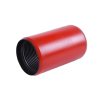- Afrikaans
- Albanian
- Amharic
- Arabic
- Armenian
- Azerbaijani
- Basque
- Belarusian
- Bengali
- Bosnian
- Bulgarian
- Catalan
- Cebuano
- Corsican
- Croatian
- Czech
- Danish
- Dutch
- English
- Esperanto
- Estonian
- Finnish
- French
- Frisian
- Galician
- Georgian
- German
- Greek
- Gujarati
- Haitian Creole
- hausa
- hawaiian
- Hebrew
- Hindi
- Miao
- Hungarian
- Icelandic
- igbo
- Indonesian
- irish
- Italian
- Japanese
- Javanese
- Kannada
- kazakh
- Khmer
- Rwandese
- Korean
- Kurdish
- Kyrgyz
- Lao
- Latin
- Latvian
- Lithuanian
- Luxembourgish
- Macedonian
- Malgashi
- Malay
- Malayalam
- Maltese
- Maori
- Marathi
- Mongolian
- Myanmar
- Nepali
- Norwegian
- Norwegian
- Occitan
- Pashto
- Persian
- Polish
- Portuguese
- Punjabi
- Romanian
- Russian
- Samoan
- Scottish Gaelic
- Serbian
- Sesotho
- Shona
- Sindhi
- Sinhala
- Slovak
- Slovenian
- Somali
- Spanish
- Sundanese
- Swahili
- Swedish
- Tagalog
- Tajik
- Tamil
- Tatar
- Telugu
- Thai
- Turkish
- Turkmen
- Ukrainian
- Urdu
- Uighur
- Uzbek
- Vietnamese
- Welsh
- Bantu
- Yiddish
- Yoruba
- Zulu
Understanding Casing and Tubing Joint Designs in Oil and Gas Industry Applications
Casing and Tubing Connections An Overview
In the oil and gas industry, the extraction of hydrocarbons from the earth involves complex processes that require specialized equipment. Among these, casing and tubing connections play a critical role in ensuring the integrity and efficiency of drilling operations. Understanding these connections is essential for engineers, geologists, and drilling personnel to maintain safety and operational excellence.
Casing Connections
Casing is a critical component of the wellbore structure. It consists of large-diameter pipes that are installed in the drilled hole to provide support, prevent the collapse of the wellbore, and isolate different geological formations. The types of casing include surface casing, intermediate casing, and production casing. Each type serves a specific function during the drilling process.
Casing connections are the joints that link individual lengths of casing together. These connections must be robust enough to withstand the high pressures and temperatures found underground. The most commonly used casing connection types include threaded connections, which involve a male and female end that screw together, and welded connections, which involve the fusion of two casing sections.
Threaded connections come in two forms the standard API (American Petroleum Institute) threads and premium threads. API threads are more common and are designed for average operational conditions. However, premium threads offer enhanced sealing capabilities and greater strength, making them suitable for high-pressure and high-temperature environments. Choosing the right type of connection is essential for preventing leaks and ensuring safe operations.
Tubing Connections
Tubing, on the other hand, serves a different purpose than casing. It consists of smaller-diameter pipes that allow the flow of oil and gas from the reservoir to the surface. Tubing must be able to handle the production fluids and the associated mechanical stresses involved in the extraction process. Thus, tubing connections are equally crucial to the integrity of the well.
casing and tubing connections

Similar to casing, tubing connections can be threaded or welded. Most tubing connections utilize threaded interfaces due to the ease of installation and maintenance. These connections are designed to provide a leak-proof seal, which is critical in preventing the escape of hydrocarbons during production.
In recent years, advancements in technology have led to the evolution of new connection designs that improve performance and reliability. For example, modular connection systems have been developed to enhance the flexibility of tubing installations and allow for easier replacement or removal. Such innovations aim to improve the operational efficiency while minimizing risks associated with wellbore integrity.
Importance of Quality Control
Whether for casing or tubing, the quality of connections is of utmost importance. Rigorous testing and quality assurance processes must be implemented to ensure that connections can withstand the specific operational environments they encounter. This includes hydrostatic testing, which assesses the strength and leak resistance of the connections under pressure. Additionally, non-destructive testing methods, such as ultrasonic testing, are used to detect any flaws in the metal that could lead to failure.
Furthermore, the choice of materials used in casing and tubing connections is also critical. Steel is the most common material due to its strength and durability, but various grades and coatings can be selected based on the corrosiveness of the environment and the specific requirements of the drilling operation.
Conclusion
Casing and tubing connections are essential components in the oil and gas extraction process. Their design, selection, and installation require a deep understanding of the conditions encountered in the subsurface environment. By prioritizing quality and innovation in connection technologies, the oil and gas industry can continue to improve safety and operational efficiencies, ensuring the reliable extraction of valuable resources. As technology advances, ongoing research and development in this area will be crucial to meet the evolving demands of the industry.
-
Tubing Pup Joints: Essential Components for Oil and Gas OperationsNewsJul.10,2025
-
Pup Joints: Essential Components for Reliable Drilling OperationsNewsJul.10,2025
-
Pipe Couplings: Connecting Your World EfficientlyNewsJul.10,2025
-
Mastering Oilfield Operations with Quality Tubing and CasingNewsJul.10,2025
-
High-Quality Casing Couplings for Every NeedNewsJul.10,2025
-
Boost Your Drilling Efficiency with Premium Crossover Tools & Seating NipplesNewsJul.10,2025







